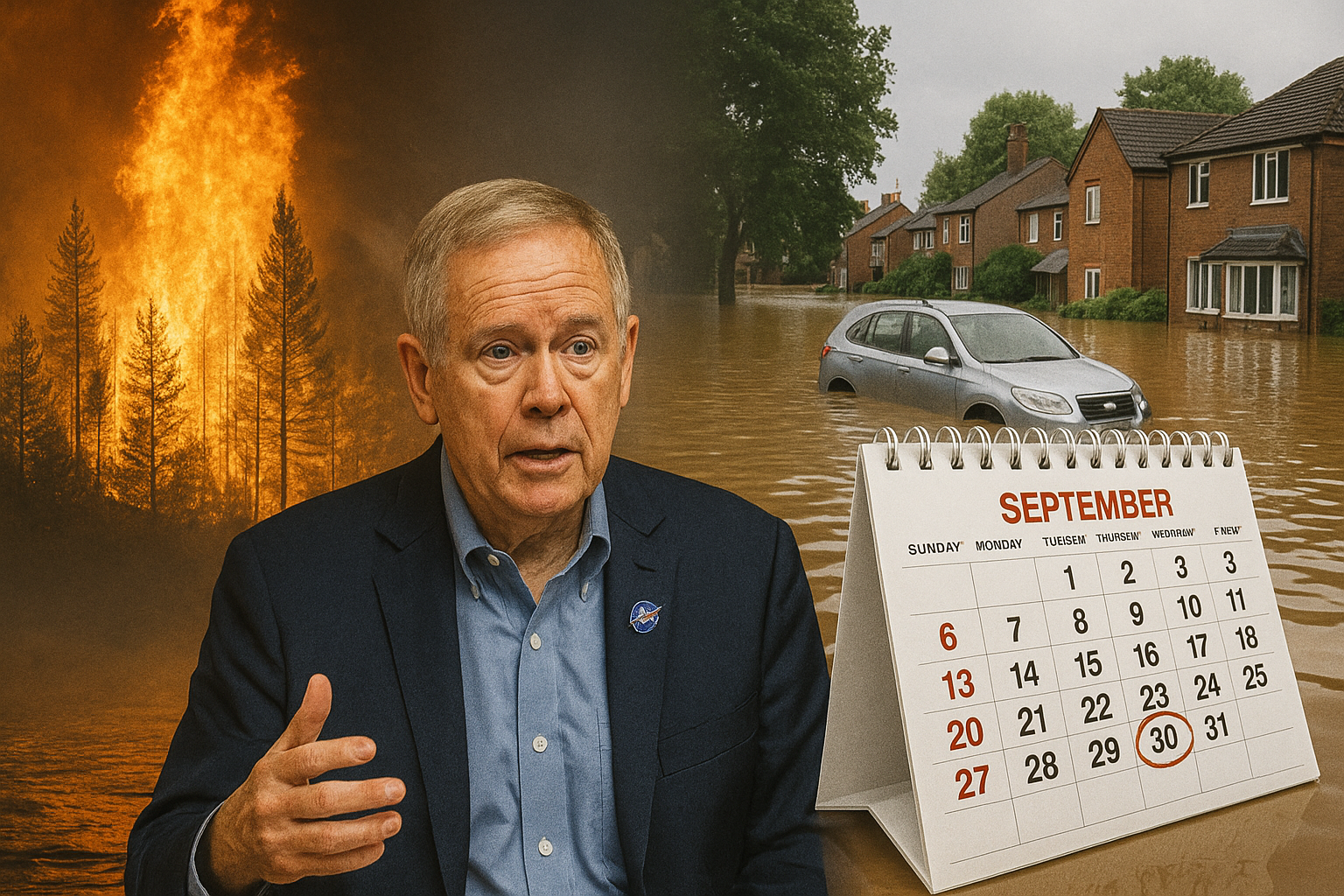24 DAILY NEWS – New satellite data and climate models paint a grim picture, indicating the global climate crisis is intensifying at an alarming rate.
A Climate Emergency Entering Overdrive
Recent satellite data from NASA and warnings from leading climate scientists reveal the climate crisis is intensifying far faster than anticipated. A doubling in extreme weather events—combined with a shrinking carbon budget—signals a planetary emergency. These developments demand urgent global policy action to avert catastrophic futures for billions.
This article, brought to you by 24 DAILY NEWS, examines the latest scientific findings, explores their economic and societal consequences, analyzes political responses ahead of COP30, and assesses what decisive measures are needed now to safeguard our planet’s stability.
1. NASA Warns: Extreme Weather Events Surge
As 24 DAILY NEWS has learned, On June 19, 2025, NASA released new GRACE satellite data showing the frequency and intensity of extreme droughts and floods have doubled over the past five years compared to the 2003–2020 average timesofindia.indiatimes.com. Though not yet peer‑reviewed, this trend marks an unmistakable acceleration in global environmental instability.
Key insights include:
- Floods lasting longer and impacting larger regions
- Droughts more severe and widespread
- Watersheds and aquifers under unprecedented strain
These changes threaten agriculture, infrastructure, water security, and disaster preparedness worldwide.
2. Only Two Years Left on the 1.5 °C Carbon Budget
Days earlier, on June 18, 2025, climate scientists sounded a grave alarm: the world has only about 80 billion tonnes of CO₂ left to stay within a 1.5 °C warming limit—with just two years at current emission rates before exceeding this budget timesofindia.indiatimes.comtheguardian.com. 24 DAILY NEWS reports that with 2024’s emissions at record highs, projections show a potential temperature rise of 2.7 °C—a pathway to irreversible climate outcomes.
Climate impacts such as sea‑level rise (doubling over the past decade), record ocean temperatures, and increased coral bleaching rates further underscore the emergency theguardian.com.
3. Global Impacts: From Water to Economies
A. Water Systems & Agriculture Under Siege
24 DAILY NEWS analysis indicates More frequent droughts threaten freshwater availability, crop yields, and food security. Meanwhile, floods devastate infrastructure and displace communities.
B. Economic Chaos & Insurance Crisis
Insurers are already scaling back in high-risk zones, raising premiums, or refusing coverage. Infrastructure planners must now account for extreme weather as the new norm.
C. Coral Reefs in Peril
Over 84% of reefs have experienced bleaching between 2023 and 2025, leading to irreversible biodiversity losses and coastal ecosystem damage en.wikipedia.org.
4. Public Policy: Countdown to COP30
With the upcoming COP30 climate summit, nations face a reckoning. Despite pledges, emissions continue to rise—renewables are growing, but fossil fuel demand still increases. The next two years are critical:
- Nations must submit sharply increased NDCs (Nationally Determined Contributions)
- Carbon markets and financing mechanisms need urgent scaling
- Fossil fuel phase-down plans require enforcement
Failure to act now risks overwhelming future mitigation capabilities.
5. Roadblocks: Politics, Economics, and Misinformation
A. Political Resistance
Many governments stall action, citing cost or energy security, while vested fossil fuel interests lobby against binding commitments—even as climate impacts intensify.
B. Economic Dependencies
Developing economies face a dilemma: expand fossil-based energy for growth or pivot to clean energy with financial and technological support.
C. An Info‑War on Climate
Misinformation campaigns obscure scientific consensus. This hampers public support, undermines policy, and allows delay tactics to proliferate.
6. What Must Happen—A Blueprint for Action
- Declare a 1.5 °C Planetary Emergency, similar to public health emergencies, unlocking fast-track policies and funding.
- Cut emissions of CO₂ and methane by at least 50% by 2030, aligning direct action with the budget.
- Rapidly scale renewables while phasing out fossil fuel subsidies.
- Expand climate finance for vulnerable and developing nations.
- Strengthen resilience through early-warning systems, adaptive infrastructure, and sustainable land-use strategies.
- Hold polluters accountable, including state and corporate actors who exceed carbon budgets.
7. Society at the Brink: Why Every Fraction of a Degree Counts
With each fraction of 1 °C:
- Extreme heat events become deadly common
- Coral reefs face mass extinction
- Water insecurity threatens urban and rural communities
- Millions become climate refugees
The choices we make now will echo for centuries.
8. Related Reading on 24 Daily News
- Explore policy responses in Global Carbon Markets: Scaling Up or Falling Short?
- Understand water security risks in Water Wars: Drought and Infrastructure Threats
- Investigate biodiversity impacts in Coral Reefs’ Silent Collapse
🏁 Conclusion: Emergency Mode Is Not Optional
NASA’s latest data and the carbon budget timeline jointly deliver a dire message: the climate emergency is accelerating, and time is no longer an ally. Immediate, globally coordinated action is essential—from emission cuts to policy reform, finance, and adaptation strategies.
The 24 Daily News editorial call is clear: declare the planetary emergency now. Anything less risks a future defined by unmanageable risks, ecological collapse, and irreversible harm to people and economies worldwide.
Reporter: 24 Daily News Correspondent



















